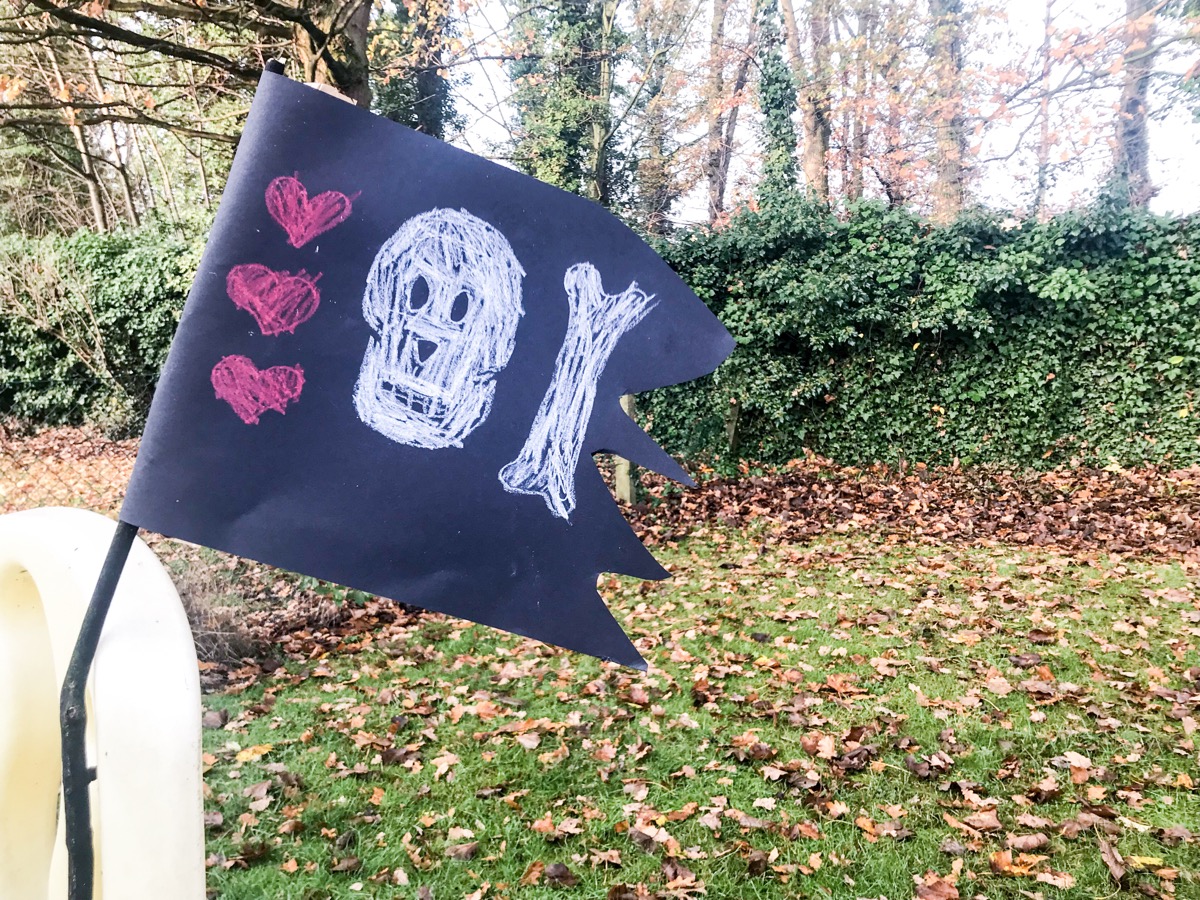
Ahoy! I be called Kraken Loot, and I be the Cap’n of my ship. I hear on the grapevine you Scallywag Landlubbers are wanting to become Buccaneers? Well shiver me timbers! Ye made a grand choice. I hear ye say you have a ship ready? Well Yo ho ho! Ye came to the right place me hearties. Lean in and listen carefully, ye’ll be needing to make a Jolly Roger! But before ye can make that, ye be needing to learn about our history and the history of pirate flags if ye our to make it in our world. Ye see all ye law abiding citizens have a different flag history to ours. Flags be like a sea language, but for me mateys and I, they be part of what makes us formidable and scary. So sit back Landlubbers, I’ll soon make pirates out of ye Lads and Lasses. Pssst. Don’t worry, I’ll try be speaking yer Landlubber language in this next bit.
Pirates who were they and what did they do?
Pirates have existed since ancient times. One of the first records of piracy was in 14th century and they were referred to as the ‘Sea People’ or ocean raiders that attacked the Greeks. However it is not until the 17th and early 18th centuries when piracy had their Golden Age (1650-1720). Pirates were (and still are) highwaymen and women of the seas. They robbed and looted ships for their treasure and goods and were notoriously dangerous. Most had fearsome reputations and this was often displayed for all to see through their flags on their ship. Their flags announced them when they wanted to be revealed and they were displayed to spread fear to any that dared cross their paths. To fly a pirate flag, was to declare you had nothing to lose as being caught by the Navy would be punishable by death. To even have a pirate flag aboard a ship, was to mean you were guilty. Infamous pirates that were caught in Britain were often hung along the River Thames so that all boats coming in and out of London would see them.
There were three types of pirates recorded from the Golden Age of Piracy
- Privateers, were used within war time and they were ‘lawful’ pirates who had ‘letters of marque’ issued by Admirals in the Navy. These letters stated that they could plunder and attack ships of enemy nations. They were respected and were not considered to be pirates.
- Buccaneers, pirates that were from and worked around the West Indies. They attacked Spanish ships that moved around the Caribbean.
- Corsairs, were Christian or Muslim pirates that moved around the Mediterranean.
Pirate Law
During the Golden Age of Piracy, a Pirate Code was created in order to keep crews in line. Most were violent and greedy and in order to keep peace on ship out at sea Captains together drew up a code of rules to live by. A few of these rules were the following; if a fellow pirate was caught in the act of stealing, they would be marooned on a desert island or put to death, in the evening all candles were to be put out so that the crew could rest, everyone had an equal vote on important issues and fighting was firmly not allowed, many captains punishing anyone that disrupted the peace.
Flags at sea
Maritime flags were created in order to be like a language so that ships could communicate from vast distances. Often they would have flags of country of origin. It is recorded that in 1697 an English Admiralty Law came into effect, stating that all privateers were to fly ‘Red Jack’s’ (a red flag) in order for them to be distinguished between their Navy ships. If the ship that the privateers were attacking did not surrender on site then they were to raise their black flag to indicate no mercy would be given. After the War of the Spanish Succession had ended in 1714, many privateers went on to full piracy and it is thought that they simply decorated these black and red flags with their own designs.
It is unsurprising then that pirates often used false coloured flags to trick oncoming ships, once the ship was close enough they would raise their pirate flag as a symbol of who they were and that they were about to attack.
The Jolly Roger
Pirate flags were soon called, ‘Jolly Rogers’ and they were used for identification of pirate ship. A Jolly Roger generally had a skull and crossbones symbol on a black flag, though they were many variations. Many pirates used this type of flag in the 1710s, including Black Sam Bellamy, Edward England and John Taylor. In Charles Johnson’s book, ‘A General History of the Pirates’ published in Britain in 1724, he specifically mentions, Bartholomew Roberts and Francis Spriggs as pirates that called their flags ‘Jolly Roger’s.’ Both had different designs which leads historians to believe that it is a generic name for a black pirate flag and not just for a skull and crossbones one.
Why was it called Jolly Roger?
No one for sure knows, though there are many theories! Here are a couple of them.
- The French first flew a red privateering flag called, ‘Joli Rouge’, meaning ‘pretty red’. It is thought the British stole the name and simply just used it for their black flags.
- It comes from a derivation from the old English term ‘Old Roger’, which was slang for ‘the Devil’. The word ‘Roger’ also deriving from the word rouge which in the Cambridge Dictionary is described as, ‘behaving in ways that are not expected or not normal, often in a way that causes damage.’ And if related to biology described as, ‘a rogue animal is a dangerous wild animal that lives apart from the rest of its group.’ Sounds rather apt right?
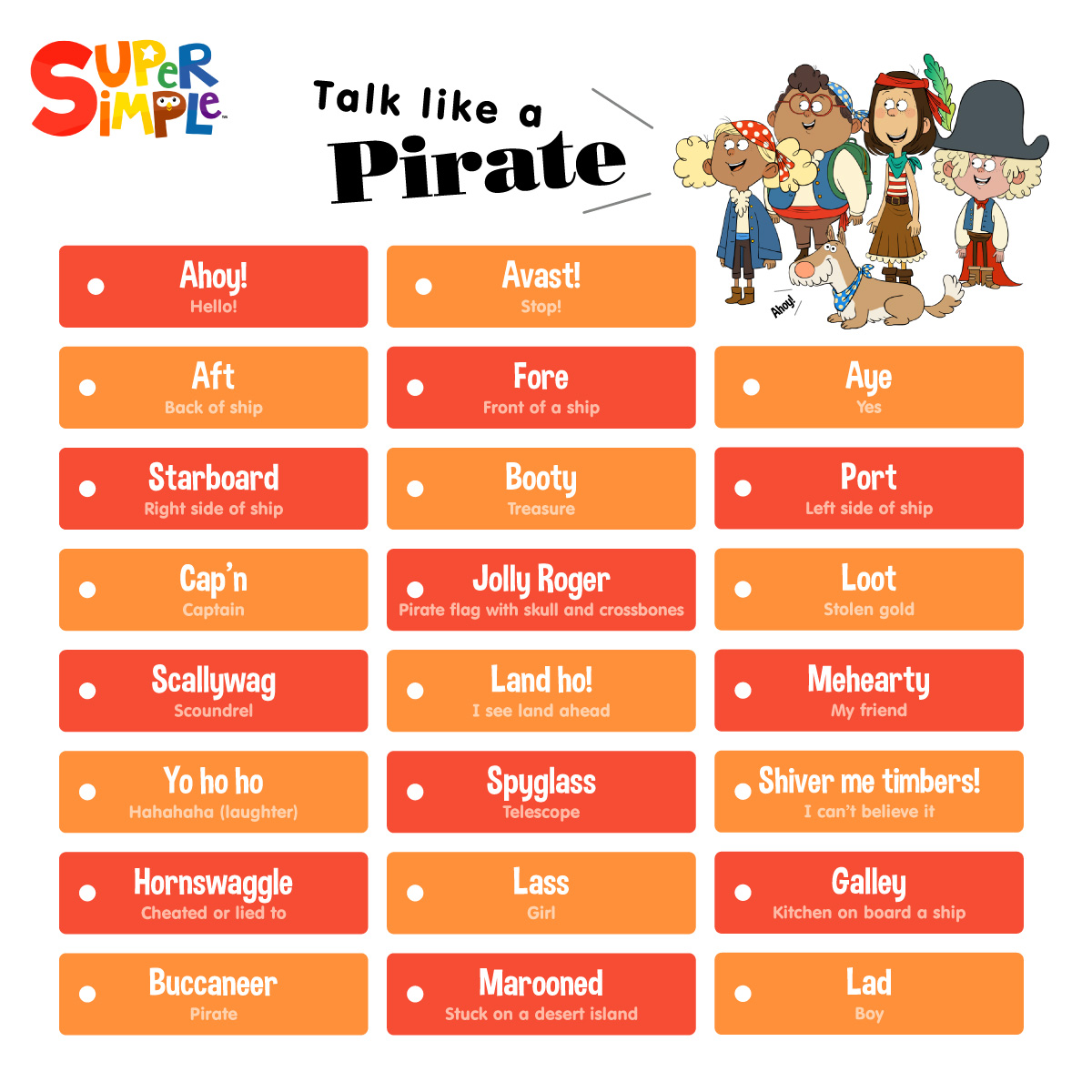
Famous Pirates and their flags to look up:
Thomas Tew (1692)
Emmanuel Wynn (1700)
John Quelch (1703)
Christopher Moody (1713)
Edward Teach (1716)
Stede Bonnet (1717)
John Rackham (1718)
Edward Low (1720)
Famous Female Pirates to look up
Jean De Clisson (1300-1359)
Grace O’Malley (1530-1603)
Anne Diey-Le-Vent (1661-1710)
Mary Read (c. 1695-1721)
Anne Bonny (1698-1782)
Ching Shih (1775-1810)
Savvy? Ye got all that?
Right then on to the important stuff. There are many ways to make your own pirate flag, from super easy to more complicated versions. We have stuck to a super quick and simple way to make a pirate flag with your children so that they can get on and start playing pirates as soon as it’s made.
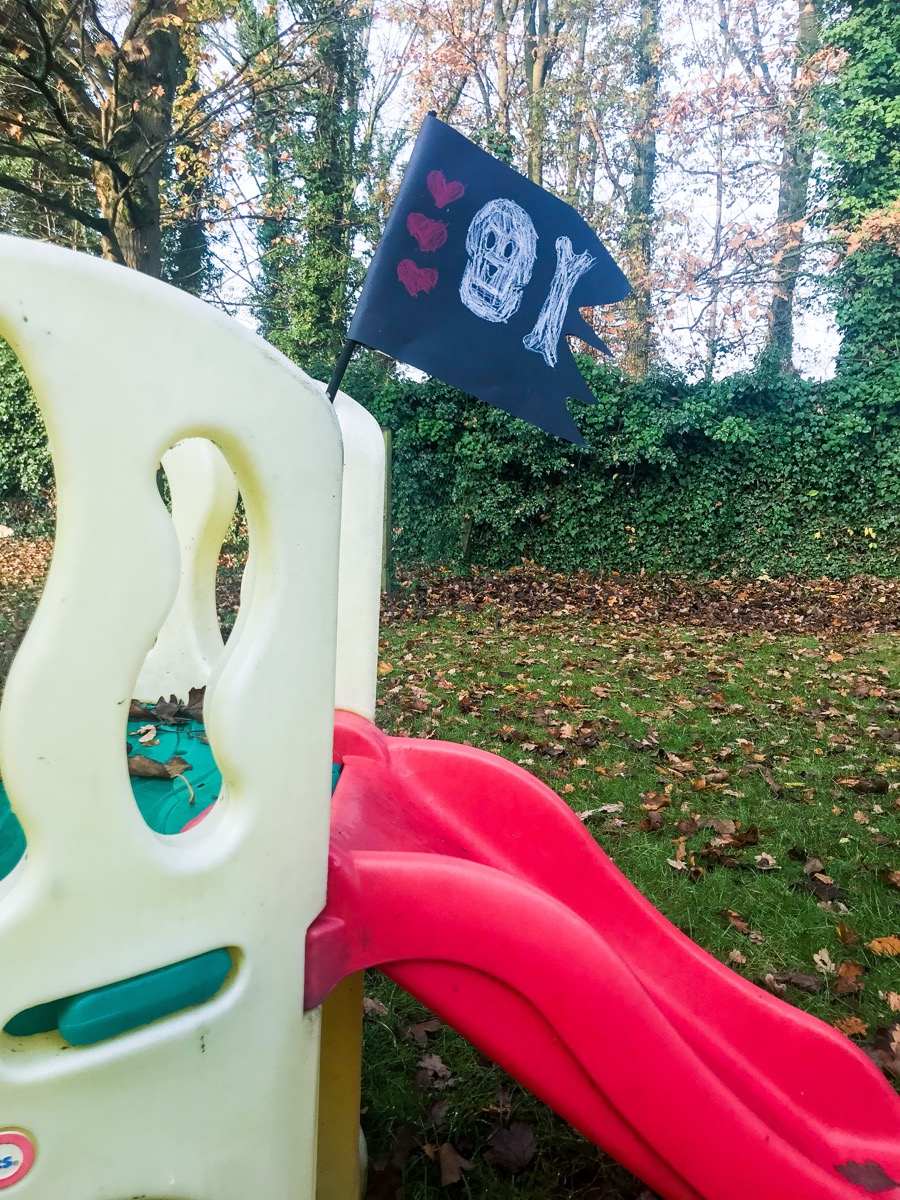
Making your own Jolly Roger
What you will need:
- Black A3 card
- White and red oil pastels
- Industrial tape
- Broomstick / large branch
- Scissors (optional)
AND/OR
- Red Card
- Black and white oil pastels
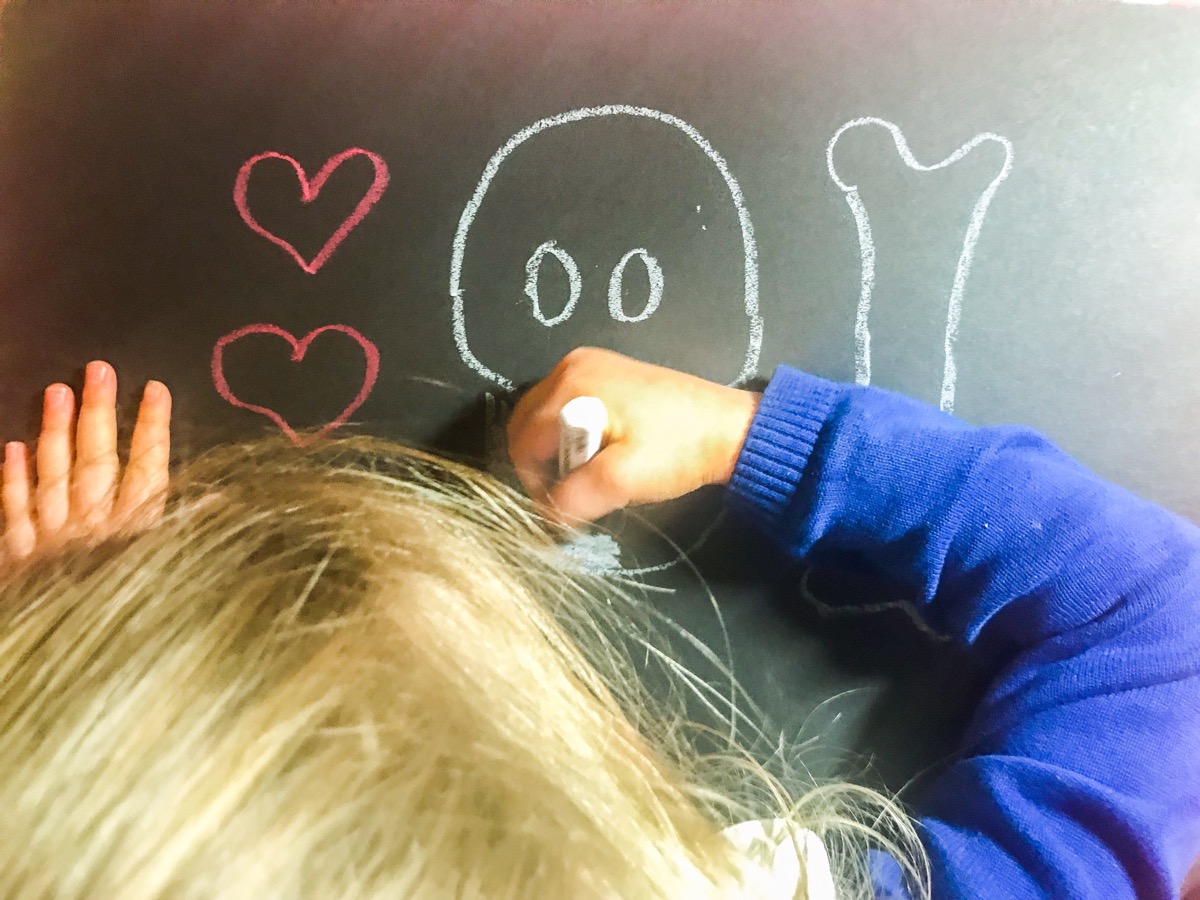
Instructions:
- Show them some pictures of some examples of Jolly Rogers. If they want to plan out their flag, they may do so on a separate sheet of paper.
- Give them a piece of A3 card, either black or red. If you use black card, give them a piece of red and white oil pastels. If you use red card, given them black and white oil pastels.
- Get them to draw onto the card their pirate flag design. If your child needs a little help, why not draw the design they want on the paper and let them colour it in.
- If your child would like the flag to look worn and ripped, cut a zig zag line across the end of the flag.
- Once completed find a large wooden stick and attach the card flag to the stick with industrial tape.
- Put in place of your pirate ships!
Now that you’ve got a flag, choose your pirate name!
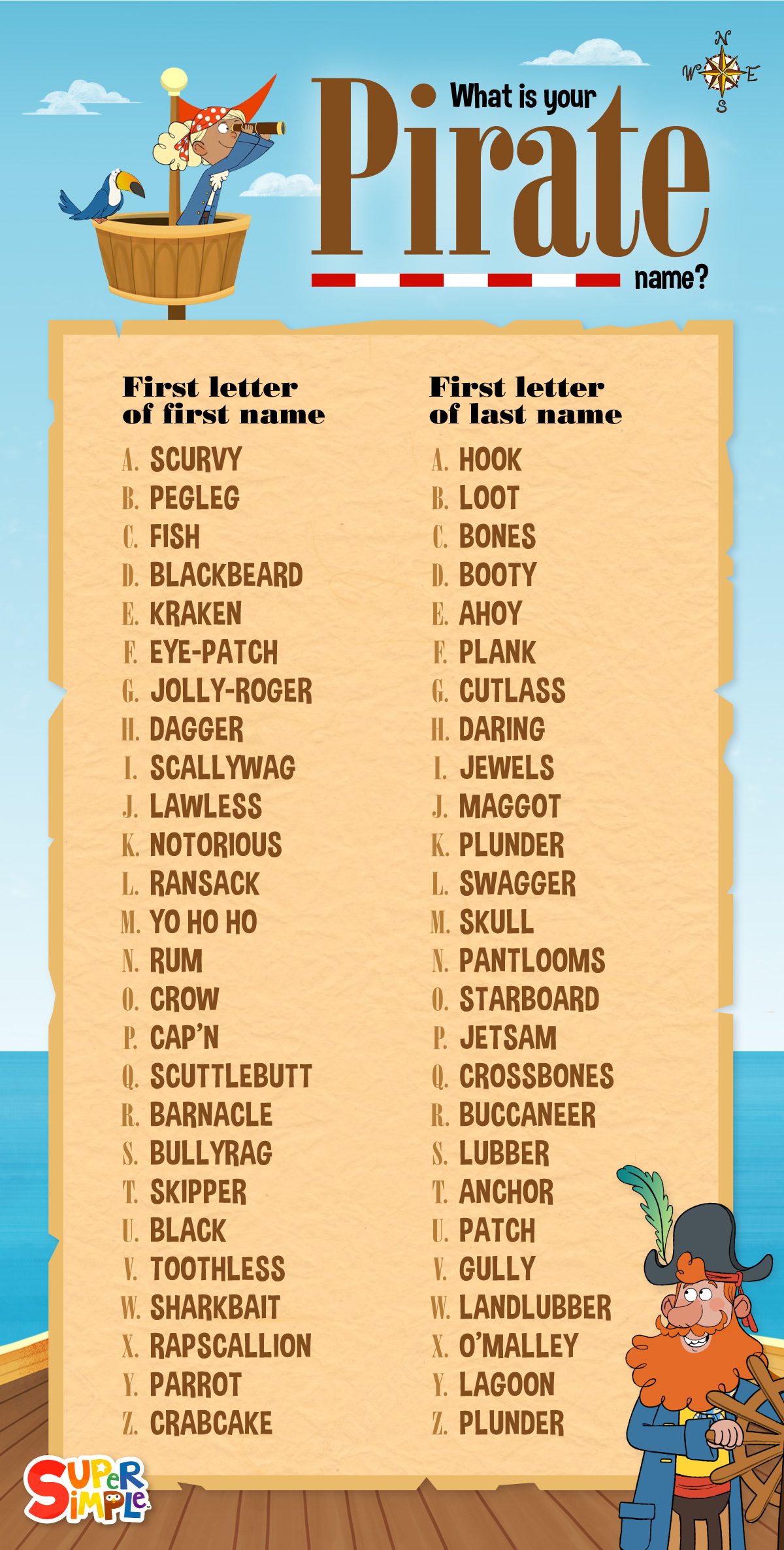
Don’t forget to follow us on Twitter, Instagram, Pinterest, and Facebook!
 Contributor
Contributor
Grace Selous Bull is an arts education author and freelance blogger. Her book, ‘Potty About Pots: arts and crafts for home and school’ is aimed at children from 5-12 years old and takes them through a journey of ceramics through time. She is a full time Mummy of two girls, both of whom love being creative, and is married to her husband, Andrew, who does not.
Original content © 2019 Super Simple. Not to be reprinted without express written permission. Terms of Service.

